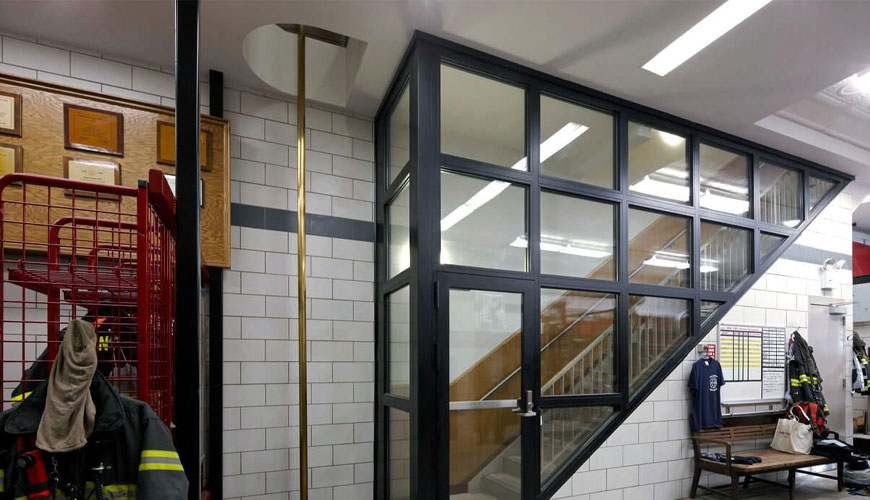

EUROLAB laboratory provides testing and compliance services within the scope of DIN 4102-4 standard. This part of the DIN 4102 standard covers the definitions, requirements and tests for fire protection technology for fire barriers, barriers in elevator shafts with fire resistance category F 90 and glazing with fire resistance category G (fire resistant glass). These components must also meet other requirements not specified in this standard.

Other components, eg. Bearing and non-bearing walls, floors, columns, beams and glasses in the fire resistance category are dealt with in DIN 4102-2; special components, eg. Fire walls and non-load-bearing external walls according to DIN 4102-3; Ventilation ducts in DIN 4102-6 and roof coverings in DIN 4102-7.
The fire behavior of the special components covered by this standard is characterized by the fire resistance time and other listed properties. Fire resistance time is the minimum time in minutes that components fulfill their requirements in the test.
Components are classified into fire resistance categories according to their fire resistance time. Barriers in elevator shafts with fire resistance category F 90 are not classified in fire resistance categories.
Fire barriers must withstand the mechanical stress of the test. It must be such that they remain fully functional, do not show any visible damage from the outside, and meet the requirements. Fire barriers should close automatically.
Fire barriers must not collapse during the fire test within a test period corresponding to the fire resistance period and must not open partially or completely as a result of failure of closing or locking parts or holding devices.
In the fire test carried out during a test period corresponding to the fire resistance time, the unexposed side of the fire barriers shall not heat up more than 1 K by averaging the measurement points 5 to 140 of the initial temperature. At the beginning of the test, the condition of the test specimen should be checked.
No temperature should occur at any measuring point. The edge strip of the movable part of the barriers and the wall surface adjacent to the opening and temperature rise during fire tests should be ignored. This strip has a width of 100/1 the interior height of the opening, subject to a maximum of 10 mm, and runs directly adjacent the boundary of the interior opening and around the door handle passage. In the case of multi-leaf doors, such a strip should be allowed on both sides of a line dividing the overlapped area common to the two wings of the door.
A hot gas test and a fire test must be performed on at least 2 test specimens. Test specimens should be tested with glass, suspension and guide components (eg rollers, hinges, ropes, chains, bolts), closing devices (eg parts of locking device such as bolts, hooks, latch), controls and controls. switching equipment (e.g. paging and signaling equipment, switches and contracts for the controller including the associated electrical wiring) and their rust protection must be considered.
Among the services provided by our organization within the framework of material testing services, there are also DIN 4102-5 standard tests. Do not hesitate to contact our laboratory EUROLAB for your testing and certification requests.
To get an appointment, to get more detailed information or to request an evaluation, you can ask us to fill in our form and reach you.